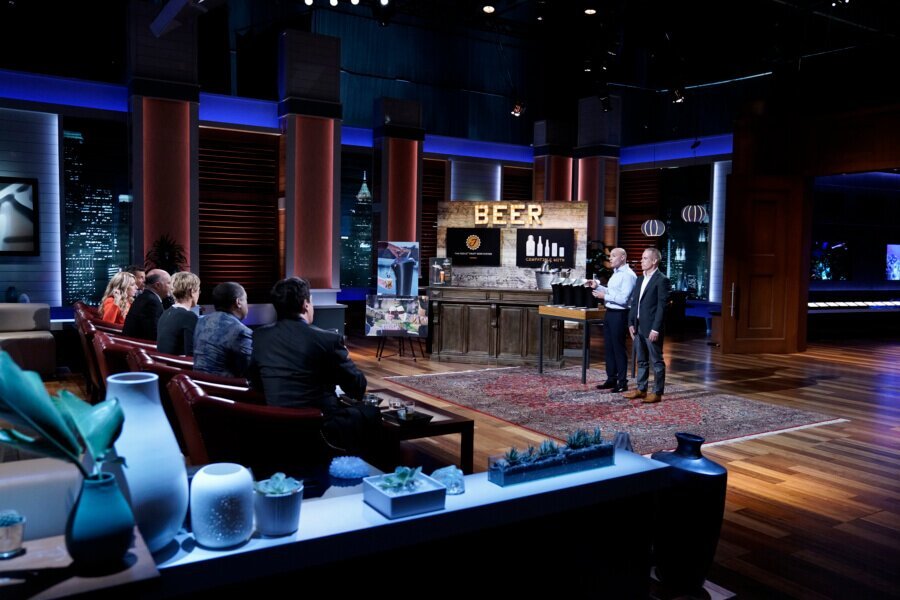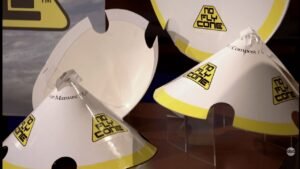Contents
ToggleIntro: SynDaver and the Big Stage
Everyone loves a good Shark Tank fairytale—a founder, a handshake, millions in the bank, and happy endings all around. But here’s the real question: does landing a deal on TV always mean you struck gold? Let’s look at SynDaver Labs, the synthetic cadaver company led by Dr. Christopher Sakezles, and see how pitching in the Tank actually played out.
SynDaver Labs wasn’t hawking cute gadgets or kitchen hacks. They brought serious science—hyper-realistic human bodies made of synthetic tissue—straight to the Sharks on Season 6. This wasn’t just about money. It was about shaking up old systems, growing fast, and betting big. They got the cameras, the drama, the historic handshake. But did the risk pay off?
If you think every big Shark Tank deal means easy money and smooth sailing, SynDaver’s story will change your mind.
Product Spotlight: Synthetic Cadavers That Change the Game
Let’s skip the jargon. SynDaver Labs builds artificial human bodies for students, doctors, and researchers to practice on. Realistic skin, veins, organs, the whole thing. Traditional cadavers are expensive and one-use. SynDaver’s model? About $40,000—a lot—but you use it over and over.
That’s huge for teaching hospitals, schools, and even the military. Instead of waiting for donated bodies (and dealing with strict rules), they get a clean, reusable, and ultra-realistic training option. It’s not a plastic dummy. Surgeons say working with these things feels like the real deal.
Why do customers keep coming? Here’s the key: every time a med student practices a cut on plastic, they don’t really learn. On a SynDaver, they actually see and feel how real tissue reacts. It’s why top programs, from universities to the Army, started phoning Dr. Sakezles.
Is it cheap? No. Is it better than one-and-done real bodies? That’s not even a question. For schools with money, it’s a no-brainer long-term play.

Setting the Scene: The Shark Tank Pitch
It’s easy to forget, but pitching a high-ticket, science-driven product on Shark Tank is risky. The show loves big profit margins and quick consumer turnarounds. SynDaver? It’s niche, technical, and not a fit for QVC.
Dr. Christopher Sakezles—brains and founder—walked into the Tank in Season 6, episode aired May 8, 2015. He put the numbers out there from the jump: $10 million in sales over three years, and sales doubling each year. Sharks perked up. But Sakezles wanted $3 million for 10% equity—a $30 million valuation. No small ask.
He made it clear he was playing the long game: reinvest profits, keep innovating, and stay at the science frontier. That’s where the tension started. Some Sharks like fast payback. But Sakezles made it clear: not interested in flipping for a quick buck. He wanted ammunition for R&D, not just investor cash.

Where Did the Deal Land?
The pitch was pure drama. Mark Cuban and Lori Greiner, Shark Tank veterans, weren’t biting. They saw SynDaver as a tough fit for their typical strategy. Mr. Wonderful (Kevin O’Leary) bowed out when it became clear Sakezles was all-in on research, not quick profits.
But Robert Herjavec? He smelled something big. Offered $3 million for 35%. Sakezles pushed back. The haggling was tense, and both worked the room. In the end, Sakezles agreed to give up 25% equity for $3 million—on air, the largest deal ever on Shark Tank.
But here’s what you rarely see: the handshake on TV means next to nothing until the paperwork lands. Behind the scenes, things unraveled fast.
Did SynDaver Score? The Money and Net Worth Update
Every entrepreneur reading this knows: exposure is great, but money in the bank is what matters. After the cameras turned off, the SynDaver/Herjavec deal fizzled. The Wall Street Journal, Forbes, and SharkWorth all reported the same thing—biggest on-air deal, but no cash ever changed hands.
Why? It wasn’t just the money. Herjavec wanted a bigger voice in running SynDaver, maybe even a new CEO. Sakezles refused. He believed in his vision and refused to step aside, even for $3 million.
So, did it kill SynDaver? No way. The Shark Tank floodlights gave SynDaver Labs massive publicity. Sales jumped. Schools and hospitals called. Investors outside Shark Tank took notice. For a company with already strong momentum, this was a free rocket boost.
Net worth? Exact numbers are private—Sakezles plays it close—but industry trackers like SharkWorth estimate SynDaver’s revenues are multi-millions per year and climbing. The company has a strong, loyal customer base and dominates its niche. Not bad for a handshake deal that never closed.
Growth Moves: Post-Shark Tank Wins and Losses
Here’s the pattern: some companies ride the Shark Tank bump, then fade into obscurity. Not SynDaver. The attention actually stuck. Orders rose, web traffic exploded, and the brand became a known force in medical simulation—not just because of the product, but because of how Sakezles stuck to his principles.
But it wasn’t just champagne and celebrations. Going it alone meant every growth pain landed on Sakezles. He had to find other investors willing to play by his rules. He became the face of the company—good for brand, exhausting for the founder.
Bottom line: SynDaver used Shark Tank better than most. They gave away zero control, kept innovating, and grew fast. Not many can say that.
Innovation on the Table: How Products Evolved
Smart founders don’t just ride one product. SynDaver kept grinding. After the episode, the company went from synthetic human bodies to new lines—like animal models for veterinary schools, standalone organs, and even custom builds for research.
Medical simulation keeps changing: new technologies, new markets, new demands. Sakezles made sure SynDaver never sat still. It’s not just about fake bodies anymore. It’s about being the standard for simulation, from classrooms to high-stress military settings.
That level of hustle and willingness to pivot is how companies stay rich, not just famous. Think Scrub Daddy, but more technical and less retail sizzle—staying sticky by filling a vital training gap.
Who Runs the Show?
Now, let’s talk ego and control. Plenty of founders talk about protecting their baby. Few actually risk millions to do it. Sakezles is one of those rare ones. He wouldn’t budge on being CEO—even if it meant losing the biggest deal in Shark Tank’s history.
Would SynDaver have grown even faster with Herjavec’s help? Maybe. But by sticking to his guns, Sakezles kept complete control. No drama, no boardroom headaches. He’s still in the top spot, calling every shot, and doubling down on engineering and research innovation.
Not everyone can pull that power move and survive. But sometimes, not cutting a deal is the right deal. Sakezles gambled and came up big—in his own way.
Wrap Up: SynDaver’s True Legacy After Shark Tank
Here’s the street-level truth: Shark Tank gave SynDaver Labs a shot of energy, but the real fuel was grit and relentless product focus. No deal? Doesn’t matter. The company blasted ahead, grew its business, and held onto every ounce of vision.
If you’re an entrepreneur, remember this story. A TV handshake is just the first test. Control, values, and a killer product get you further than a quick buck with someone else’s terms. SynDaver didn’t flinch when the deal collapsed—they treated it as the starting line.
SynDaver is now a top name in medical simulation. They didn’t sell out, didn’t give up control, and didn’t chase every dollar. That’s not luck. That’s the real playbook.
FAQs: Street-Level Answers
Is SynDaver Labs still in business?
Yep. SynDaver is not only alive but still growing—privately held and still run by Dr. Sakezles.
Why did the Shark Tank deal with Robert Herjavec fall apart?
Control. Sakezles wouldn’t step down as CEO, and the Sharks wanted quicker returns. Vision won out.
Who owns SynDaver Labs now?
Dr. Christopher Sakezles owns and operates SynDaver Labs. No Sharks, no outside control—just the founder at the wheel.
How much is SynDaver worth today?
Official numbers aren’t public, but estimates by “”SharkWorth”” and industry analysts put it at multi-million dollar annual revenues and strong cashflow.
Are SynDaver’s synthetic cadavers really better than real ones?
For most customers: yes. You get repeat use, zero risk, and a close match to human biology. The tech impresses.
What industries use SynDaver products the most?
Top buyers: medical and veterinary schools, military medical training, and research labs. Anyone teaching high-skills medicine.
Did SynDaver regret not closing the Shark Tank deal?
There’s no sign of regret. Sakezles calls the shots. The company kept its pace and grew faster post-show.
How did appearing on Shark Tank affect SynDaver’s sales?
Big jump in sales and attention. The show brought in ultra-valuable leads and solidified SynDaver’s industry reputation.
Want more real Shark Tank business breakdowns? Check SharkWorth for deep dives into who actually won after the cameras stopped rolling.
This isn’t another Shark Tank legend—it’s what happens when the hustle outlasts the hype.










